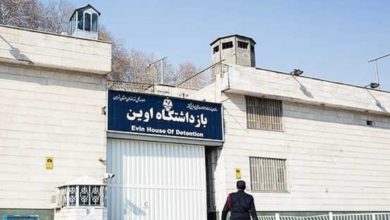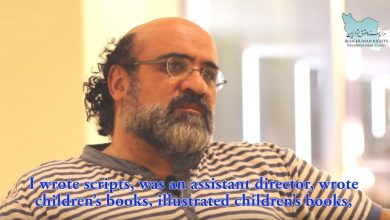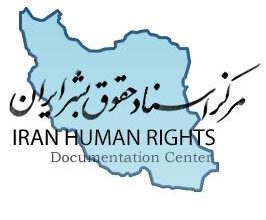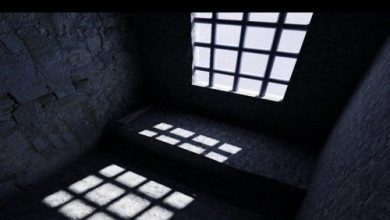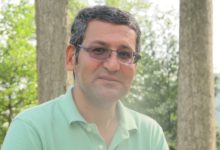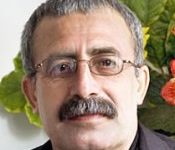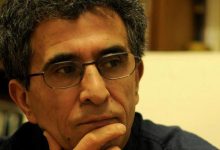Witness Statement: Bahman Rahbari
Bahman Rahbari was arrested in 1980 in connection with an attempt by military officers to overthrow the newly installed Islamic Republic. He spent five years in prison where he endured torture and abuse. He describes his experiences and the conditions of Iran’s detention centers for political prisoners during the early years of the Islamic Republic.
Full Name: Bahman Rahbari
Fathers Name: Nasrullah
Date of Birth: December 13, 1945
Place of Birth: Shiraz, Farse, Iran
Occupation: Fighter Pilot and Officer of Iranian Air Force
Interviewing Organization: Iran Human Rights Documentation Center (IHRDC)
Date of Interview: April 19, 2009
Interviewer: IHRDC Staff
Witnesses: None
This statement was prepared pursuant to a telephonic interview with Mr. Bahman Rahbari. The statement consists of 33 paragraphs and 7 pages. The interview was conducted on April 19, 2009. The statement was approved by Bahman Rahbari on February, 22, 2010.
Witness Statement
1. My name is Bahman Rahbari. On Monday, July 12, 1980, I was arrested at work by three plain clothes Iran Revolutionary Guard Council (IRGC) agents. At the time, I was a fighter pilot and an officer in the Air Force stationed at Bagha military base in Tehran.
2. The agents stopped and informed me that I was under arrest. However, they neither showed me an arrest warrant, nor informed me of the reason for my arrest. I tried to reach my wife but they did not allow me to call her. The agents told me that they had some questions for me. They made me lie in a car and took me to Khomeini Center, formerly known as Sawak Center which is an intelligence base. I was blindfolded there. In the evening, I was transferred to Komietee Moshtrak in Sepah Square. I could tell that I was in Komietee Moshtrak because I heard the clock in Sepah Square that struck every hour and the planes that were passing overhead between Doshan Tappa airport and Mehrabad airport.
3. Komitee Moshtarak is a four-floor building that has a circle-shaped space at the center. Rows of cells extend from the center of the circle in all directions. There are restrooms at the end of each lane.
4. Komitee Moshtarak belonged to police forces and was located behind the main office of the police headquarters near Sepah Square in the vicinity of the Ministry of Foreign Affair. The police usually detained robbers, goons and minor offenders in this prison. When I was taken to Komittee Moshtrak, as it was in the early days after a planned coup was betrayed, the prison was crowded with newly-detained prisoners. I was blindfolded and told not to speak a word until asked. If I needed to use the rest room, I had to raise my hand. I ate my food blindfolded with my hands from plastics plates.
5. A few days later, during Ramadan, they began interrogating and torturing me. The abuse of prisoners continued relentlessly. Most of the people who tortured the detainees were member of the communists and Mujaheedin-e Khalq Organization (MEK) who had infiltrated the regime. I did not shout when I was tortured and did not ask for mercy. The interrogators told me mockingly to ask for God’s help. I realized that they did not believe in Islam and God. I was blindfolded during interrogation and the interrogators usually sat behind me. When the interrogators wanted me to write something, they allowed me to remove the blindfold. The torture usually started after breakfast during Ramadan and continued throughout the night. Early in the morning, the torture stopped but around 9:00A.M it would resume again. After Ramadan, the torture continued all the time.
6. My interrogators wanted me to confess that I was part of those who intended to overthrow the government and to divulge the names of my coconspirators.
7. In early 1980, some military officers had planned to overthrow the Islamic Republic. The uprising was planned to start at 8 o’clock in the morning of July 9, 1980. Nevertheless, in March of 1980, the uprising was betrayed by the Communists who were cooperating with the clerical establishment. The regime arrested a number of military officers and executed some of them. This uprising later became known as the Nojeh Coup1.
1 The Nojeh Coup was an unsuccessful attempt to overthrow the Islamic Republic Government on July 11, 1980. Many Iranian Air Force Officers were implicated in the planning and carrying out of the uprising.
8. I was tortured in the basement of the Komitee Moshtrak. The basement had many cells that were connected with each other by a corridor. Each prisoner was kept in one cell during the interrogation and torture. I could hear flogging, weeping, howling, and whining of other prisoners from the interrogation room. At the beginning, I imagined that interrogators were intending to intimidate me by playing recorded voices of prisoners but when they started torturing me, I realized that they were in fact torturing detainees. One time, I saw that two detainees had been killed under torture in Komittee Moshtrak. I saw their corpses being taken out of a torture room and recognized them. One of them was Captain Pilot Nasir Zandi and the second one was Ali Sakafi, first lieutenant of fighter navigator. They lost their lives during interrogation.
9. The interrogators used different methods of interrogation. At the beginning, they behaved kindly. Later they threatened me, told lies and claimed that someone had confessed about me to break my spirit. When these soft methods did not work, they subjected me to horrible forms of torture including flogging, use of the rack, tying me to a piece of wood and rotating me, (making kabob2), “hanging chair3” and mock execution.
10. Lashing was a common practice and continued day and night in prison. I was lashed many times on the soles of my feet with whips that were made of leather and cobble. After whipping they made me run. Apparently, they wanted to prevent my feet from swelling. Most of the time, they justified flogging with religious verdicts. For instance, they falsely accused prisoners of lying and then condemned them to lashing. It was up to them to determine how many times the prisoner had lied. They fabricated scenarios and claimed that the prisoner had lied. Based on the alleged accusations, they condemned the prisoners to 50 lashes for lying two times and 75 lashes for lying three times.
11. “Rack” was another method of torture. Interrogators tied me to a bed that was made of three pieces. My hands were tied up, feet tied at the bottom and my stomach to a piece in the middle of the bed. Gradually they pulled the three pieces of the bed apart from each other. My hands were pulled upward, feet downward and rest of the body to a different direction. I was thinking that all parts of my body were disjointed from each other while I was subjected to this form of torture. Three times I was tortured like this in Komitee Moshtrak.
12. “Making kabob” was like this: They tied me to a cross beam set up on two pillars and rotated the wood around consistently over a small pond at my bottom like making chicken kabob. Every time I was rotated, my back touched the water at the bottom and when I was brought up, they lashed my back, feet and bottom.
13. “Hanging chair” was like this: Interrogators handcuffed my hands in a very stressful position. They moved one hand from the back of my head and the other one from the waist and clenched the two hands together at my back with a handcuff. Sometimes they hung a chair from the handcuff. I always fainted after an hour when I was subjected to this method of torture.
14. Two times, I was subjected to mock execution in Komittee Moshtrak. The first time it was midnight and the next time around four o’clock in the morning. Both times, I was blindfolded and taken in a car with other prisoners. They spoke loudly with each other on the way. One of guards introduced us to another person and said that we were the military officers who attempted the coup d’état and were about to be summarily executed. I think they took us to Shamiran. After getting out of the car, we were lined up and then they shot at us. My hands were fastened to the hands of persons standing on both my sides. Both persons fell to the ground as if they were shot but it was not true. They had staged the scene. After a while both persons got up and I realized it was a mock execution. I believe this incident happened in early August of 1980.
2 See paragraph 12
2 See paragraph 13
15. After torture, they usually threw me into a solitary cell and kept me there until I felt better. When the wounds healed, torture resumed. When I was not subject to torture, they made me sleep in the corridor.
16. I was not informed of my charges in Komitee Moshtrak. By law, I had to be informed of my charges immediately after my arrest and no later than 24 hours, but no judges came to see me and inform me of my charges. I did not see my family while I was in Komitee Moshtrak.
17. Two and half months later, I was transferred to Evin prison and held in a solitary cell in Ward 209. I was subjected to mock execution in Evin too. It was around 1:30 at night. I was tied to the gallows in Evin yard. Somebody opened fire. This was also to frighten me into confessing to the charges i.e. complicity with the military officers who planned the coup and refusal to expose the identity of those who were involved in the plot.
18. Torture took different forms in Evin, but it was cruel and unbearable. For example, they put me in a room called “Oven” (because it was located right above the prison bakery). At the beginning, the room was cold but gradually it got hotter. As time passed, it became more and more difficult for me to tolerate the heat. I wet my prison clothes and put them on the floor to protect my feet from burning. I did not have sandals and my feet began to burn. The floor was hot and steam was rising from it. I was kept only once for less than 24 hours in this room
19. Another method of torture in Evin was to put my feet in cold and hot water at the same time. It was shocking. My brain was unable to feel concurrently two different kinds of temperatures. My feet were kept in two different kinds of water till one foot froze. I concentrated on my foot in the cold water. I learned that my foot exposed to cold became senseless sooner than the foot exposed to heat. I could not feel the burning of my foot when the other foot was frozen.
20. Torture continued for three weeks in Evin. During the last days of torture, my interrogator showed me a piece of paper that stated a person who had been arrested in connection with the coup had confessed that he had informed me about the coup. Reportedly, in his confession, he had said that he had informed me of the planned coup. The interrogator asked why I did not inform the authorities about the coup. I said that I did not trust that person because he was a liar. In addition, he did not talk with me about the coup’s plan; he simply said that “something is going to happen” and I said “to hell with you and whatever is going to happen.” I told him that this brief conversation between him and me took place in a parking lot and it was not a serious conversation at all.
21. After three months, I was taken to court. The night before the trial, I was allowed to contact my family. In fact, they wanted me to talk with my family about my will. I was tried in a group. There were seven of us in the court that day and all of us were charged with participating in the planned coup. At the beginning of the trial, a group picture was taken of all of us. (This picture was printed in Kihan newspaper). The trial took place inside Evin prison and Reyshahri was the presiding judge. Somebody read my charges in the court and accused me of being aware of the coup but failing in my duty to inform my superior officer. They did not give me a chance to defend myself. “Defense lawyer” did not have any meaning at that time in the Islamic Republic. I was told to introduce myself and I did and then Reyshahri said to sit down. I did. A few other accused persons wanted to start their introduction by saying “by the name of God…” but Reyshahri angrily commanded them to shut up. They could not finish their sentence. Then Reyshahri gave his verdict. He sentenced five of us to capital punishment and two of us to imprisonment. I was sentenced to five years discretionary punishment4 and one of my colleagues was sentenced to three years imprisonment.
22. There was nobody in the court apart from us. However, later during the trial, a cleric named Karobi came in and sat on a chair that was in the room. He did not say a word during the proceedings. He was an observer. We were on the right side of Reyshahri. Reyshahri was playing with his turban with one hand and with his legs with his other hand. If he was scratching his head, the person was sentenced to execution and if he was playing with his legs, the parson was spared. We later realized the meaning of his gestures after our colleagues were hanged and we were sentenced to imprisonment. The judge did not announce the verdict in the court.
23. After ten minutes, we were guided out of the court. I was blindfolded and taken to a room, the location of which I don’t know. A guard wrote a number on my feet and another guard said to write the same number on my bags of clothes. They behaved as if I was to be executed. After a while, they removed the blindfold and congratulated me that I was spared. I was transferred to Ward 503 of Evin. It was an old ward built during the Qajar dynasty. The majority of the prisoners in the ward were smugglers, goons and robbers. Nevertheless, there were a few military officers who were arrested on allegations of participating in the coup. This prison was crowded. More than 50 prisoners slept in one small room next to each other like corpses. We were served our food in that small room as well.
24. A month later, my family came to visit me and my wife informed me that I had been sentenced to five years imprisonment.
25. A month or so later a plain clothes person came to prison to see me. He said that his name was Engineer Ahmad and that he had come from the offices of the Supreme Leader and President to instruct me as to the right path. He met with me every day in the evening. We sat in a corner and talked with each other. Most of the time, he asked questions and I answered. He was interested in my military qualifications and knowledge and expertise. However, we often discussed ideological issues as well. A while passed and I realized that he was convinced of my passion to serve my country. Two weeks later, I was summoned to the Warden’s Office. I was handed my flight uniforms, personal items and clothes. Then, I was handed a letter to sign. I thought it was a letter acknowledging receipt of my clothes. Then I read the letter and noticed that it was a pledge to spy for the Islamic Republic. The following was written in the letter: “I’ll report to my authorities whatever information I receive.” I did not sign the letter and told them that I could not. They returned me back to my cell and kept me in prison for five years.
4 Article 16 of Iran Criminal Code: Ta’azir is a punishment that its degree and type is not been specified in the Shari’a and it is up to the decision of the judge. Ta’azir can be in the form of imprisonment, fines, or flogging (it should be less than haad).
26. Kachevi was the warden of Evin at the time (1980-1981). He was assassinated by a member of the MEK who had infiltrated inside the Islamic Republic Guard Corps (IRGC). The head of our Ward was Said Ahmad. I believe that Said Ahmad worked as a driver during the day.
27. In 1981, the Mujahidin-e Khalq Organization (MEK) rebelled against the regime and Evin prison became overpopulated with MEK prisoners. I had a severe backache then and visited a doctor at a health clinic in Evin occasionally. I often was not blindfolded on the way to the health clinic. One day when I was visiting the doctor, I saw a scene that I cannot forget. A great number of MEK prisoners, both men and women, were tied with their backs to a number of large trees in the courtyard of Evin. This was during the early days of the MEK’s uprising. The regime did not have enough space to hold them inside the prison. Five or six prisoners were tied around the trunk of one tree. About two weeks after the MEK uprising, I saw Ayatollah Ghafari, one of the most infamous murderer clerics in the prison, while he was performing ablution. There were stains of blood on his hands. He washed his hands and started to offer the prayer.
28. I was transferred to Qezel-Hessar prison in the summer of 1981 and held there for four years. Haji Davood was the head of the prison. Prisoners were divided according to their beliefs in Qezel-Hessar. The monarchists and those who were implicated in participating in coups were held in one ward along with some goons and robbers. The second ward belonged to the MEK, and the third one belonged to both leftist and MEK women prisoners. Male Communist prisoners were held in a separate ward.
29. Qezel-Hessar was also overcrowded. There were more than 900 prisoners in a ward that was built for 150 prisoners. They kept 35 to 40 prisoners in a cell (165cm- 245cm) that was built for two prisoners.
30. All prisoners in Qezel-Hessar had been sentenced to prison terms but they were still mistreated. For example, we had to listen to audio recitation of the Quran through prison speakers every day from the two hours before sunrise till 9 o’clock in the morning. Searches of prisoners’ property and clothes occurred almost all the time. Search of prisoners’ property was like a raid. Tavvabs5, prisoners who cooperated with the prison authorities, attacked the prisoners, beat them, and tore and broke their stuff. The guards usually made the prisoners leave the ward during the raid. I remember that on two occasions, they made us stand out in the yards in winter. Apparently, the guards were looking for letters, books, and evidence that implicated prisoners having contact with each other. A section of our ward belonged to Baha’i prisoners. The guards behaved extremely rudely with them and searched their section particularly rudely. Once Haji Davood allowed me to stay in my ward during a search because my doctor had recommended that I have absolute rest. I witnessed how rudely the guards conducted the search with my own eyes.
5 A tavvab is anyone who has engaged in the act of tawbih, or penitence. It usually refers to “reformed” political prisoners who agreed to cooperate with the regime while serving out their prison sentences.
31. Wards of women were usually searched every two weeks around 11 o’clock when the lights were turned off. They beat the women during the raid. We could hear women prisoners shouting, weeping and moaning when they conducted the search. The Islamic Republic had no respect for women at all. The regime brutally mistreated women but tried to justify the mistreatment under religious decrees. For example, while I was sitting under a window of the women’s ward in Qezel-Hessar, I heard a conversation among some prison guards discussing marriage of five women prisoners to guards. I clearly heard Haji Davood’s voice who performed the marriage ceremonies and said “now I pronounce you husband and wife.” He congratulated everyone in the room and asked them to leave the room and perform their husband and wife duty. This incident happened in 1982. Later, we heard that five women prisoners were executed in the prison.
32.A month before my prison term ended, I was transferred to Jamshidia which was administered by military forces. A major was the head of this prison. They wanted to shave my head. I protested and did not let them. Finally, they agreed to cut my hair short. They did not want to release me. I went on strike – I neither drank nor ate anything for 24 hours. Finally, on June 13, 1985, a guard came and told me that I was free but I was not given any document.
33. My brother and sister had put up their property as security for my release. Thus, I was forced to report every two week to a Revolutionary Court. In fact, I was sentenced to discretionary punishment in the first place at my trial, but they had started to enforce it only after I had been in prison for five years!

